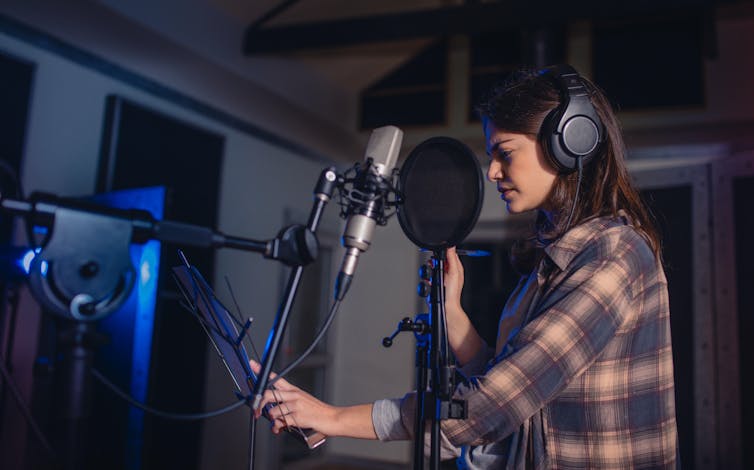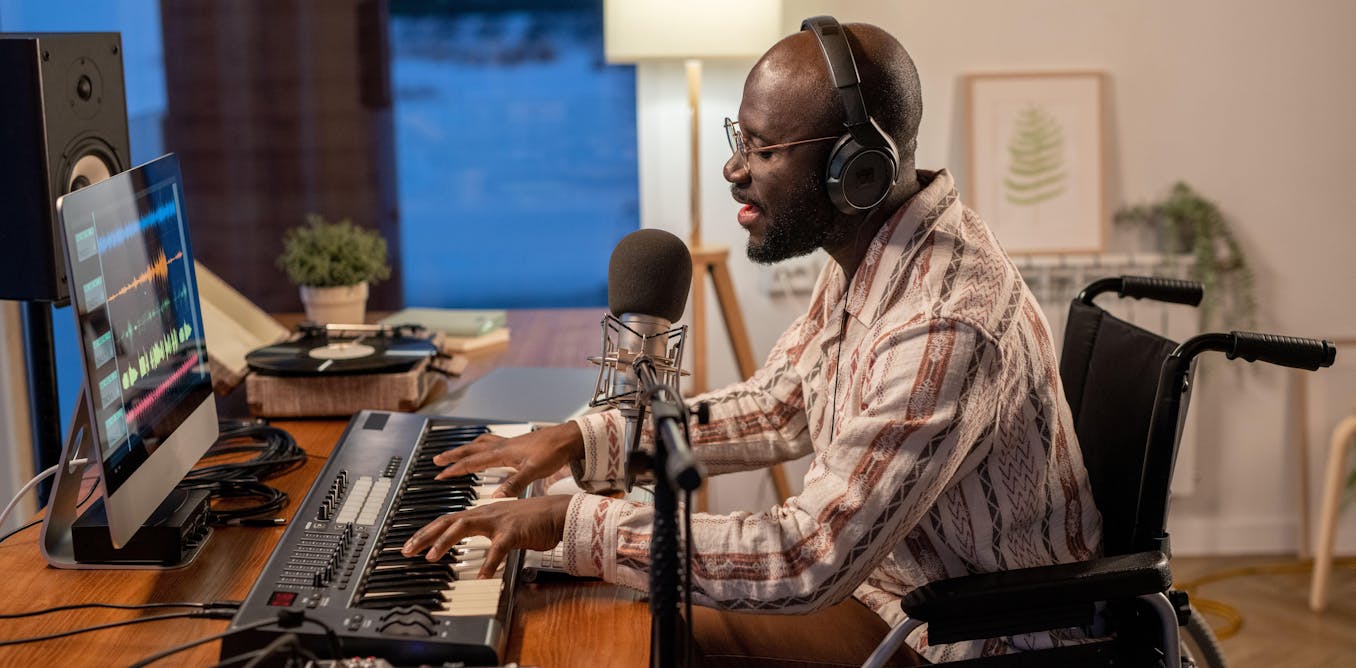The ever-advancing technologies of our digital age have transformed many industries, including – and perhaps especially – music. One of the most significant shifts has been the rise of DIY artists. These independent musicians take on roles traditionally held by record labels and managers, such as producing, recording, promoting and distributing their music.
The ubiquitous nature of digital platforms has enabled artists to reach their audiences more directly. According to a study by MIDiA Research, independent artists generated over US$1.2 billion (£900 million) in 2020, accounting for 5.1% of the global recorded music market, reflecting how digital transformations continue to reshape the music industry.
The COVID pandemic further accelerated this process, forcing artists to find new ways to connect with their audiences when live performances were no longer possible. Many independent musicians turned to digital platforms as crucial tools to engage with their fans and generate income.
Platforms such as TikTok, Twitch, Instagram Live, YouTube, Patreon and Bandcamp saw a surge in usage as artists adapted to the new reality, showcasing their music to a global audience and attracting new fans who might have never discovered them otherwise. These platforms became lifelines for visibility and growth when traditional avenues were shut down.
As a lecturer in digital innovation and entrepreneurship, my work looks at the relationship between digital transformation and DIY culture in the music industry and how it is changing the game for fledgling musicians and the business end of music too.
DIY and artistic integrity
The DIY ethos, rooted in independence and resistance to mainstream commercialisation, has evolved very successfully in the digital domain. Historically associated underground cultures, this ethos emphasises creativity, self-management and sustainability.
DIY artists are often inspired by the punk movement, which championed autonomy and a do-it-yourself approach to music production and distribution. This ethos is now applied digitally, where artists use online platforms to stay independent while reaching a global audience, that in more analogue times would just not have been possible.
One of the significant challenges DIY artists face is balancing artistic integrity with the ability to make a living. While digital platforms offer unprecedented opportunities for exposure and direct-to-fan (D2F) engagement, they also introduce new pressures and dependencies.
For example, the algorithms that govern visibility on platforms like YouTube and Spotify can also be unpredictable, often favouring more commercial content over niche or experimental works, forcing artists to compromise their creative vision to achieve financial viability.
While DIY artists are known for their self-sufficiency, some commercial artists have also adopted elements of the DIY approach, particularly in their use of digital platforms to bypass traditional industry structures.
Being discovered and making money
There are numerous success stories of DIY artists who have used digital platforms to build their careers commercially. For example, the British singer-songwriter Arlo Parks has gained significant recognition by blending personal experiences with broader social themes.
Her success is a testament to the power of authenticity and the ability to connect with a diverse audience through digital platforms. Similarly, artists like Billie Eilish and (her brother) Finneas have shown how bedroom pop can achieve mainstream success, showing the potential of DIY approaches in the digital age.

Thomas Jackson / Alamy
Social media platforms play a vital role in the success of DIY artists by helping audiences discover new talent. Platforms like Instagram and TikTok are particularly effective for reaching younger audiences and creating viral content. TikTok, for example, has over 1 billion active users worldwide, and its algorithm can propel a song to viral status overnight – significantly boosting an artist’s visibility and reach.
Subscription platforms like Patreon, Bandcamp and YouTube enable artists to make money from their work directly. These platforms allow fans to financially support their favourite artists, offering exclusive content, early access to new releases and other perks in exchange for a subscription fee. This D2F model helps artists generate a steady income, enabling them to focus more on their creative endeavours while maintaining a direct connection with their audience.
Despite the vast opportunities digital platforms create, DIY artists face big challenges, for example, in terms of financial instability. A recent report by Help Musicians revealed that 98% of musicians are worried about rising costs in the UK. An inability to make a proper living has led many artists to seek alternative income sources, such as crowdfunding and exclusive content through subscription services like Patreon.
However, the pressure to maintain a consistent online presence can also affect mental health – as One Direction’s Liam Payne spoke about in the months before his death – making it essential for artists to balance D2F engagement and personal wellbeing.
DIY artists like Clairo, who rose to fame through her self-produced online content, have also spoken of her struggles with the pressures of maintaining a public persona and the toll it can take on mental health.

Jacob Lund / Alamy
DIY communities operating within the digital domain thrive on mutual support and collaboration because artists support each other with production, promotion and distribution. This sense of community is crucial for maintaining the DIY ethos and managing the complexities of the digital domain.
The future of music looks promising, with this intersection between DIY culture, creativity and digital platforms continuing to evolve and offer new opportunities for artists. The DIY music market grew by 7.6% between 2021 and 2024.
However, for this growth to continue, these platforms must remain artist-friendly and provide fair compensation for creators. Independent musicians can thrive in the digital domain by embracing the DIY ethos and using digital platforms with the potential for global reach, D2F engagement, and diversified income streams, providing a robust foundation for sustainable careers.

Looking for something good? Cut through the noise with a carefully curated selection of the latest releases, live events and exhibitions, straight to your inbox every fortnight, on Fridays. Sign up here.

